Honeycomb Bees Garden Stepping Stones
with Huntington’s Brewster-Pierce Memorial School
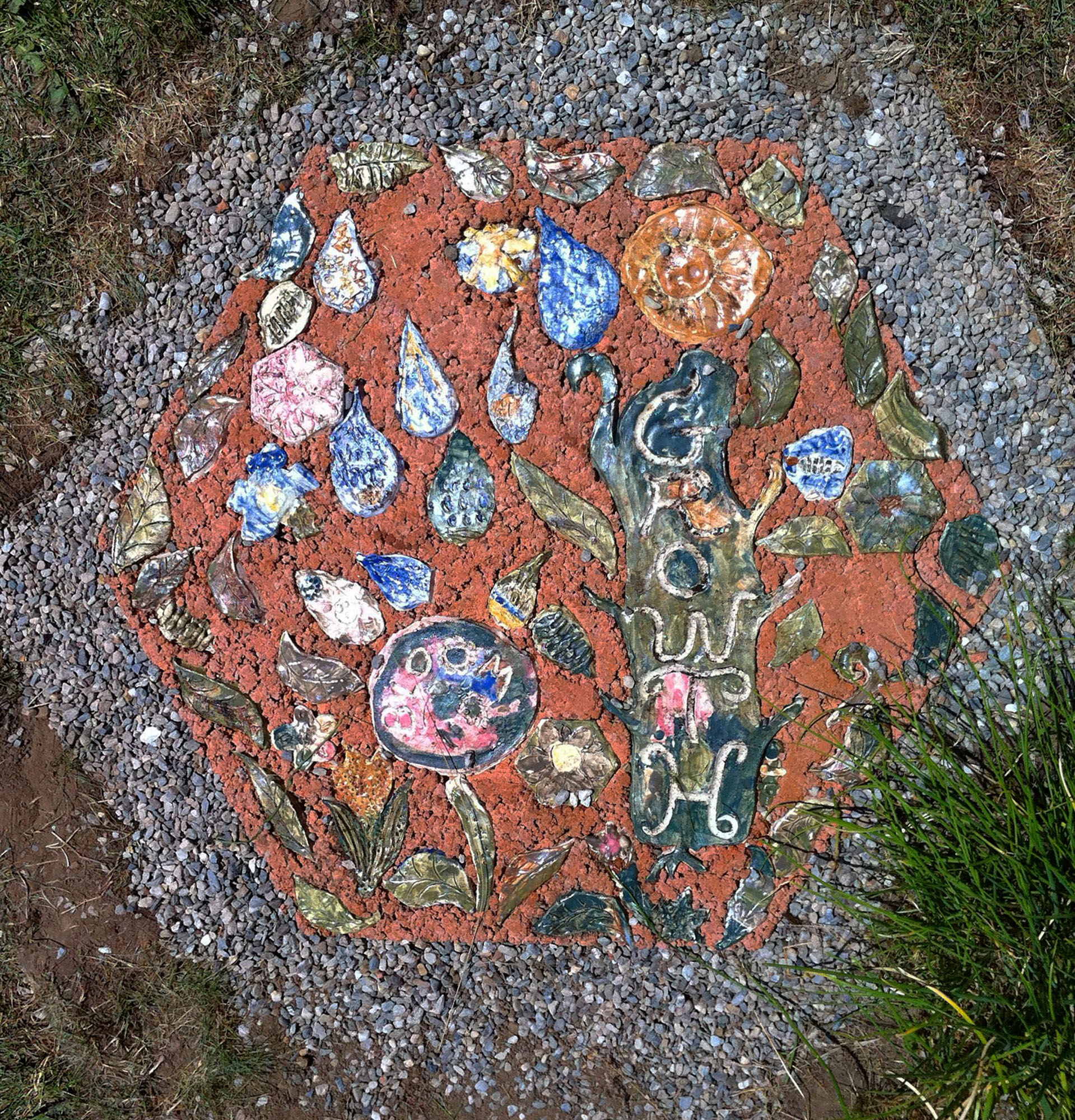
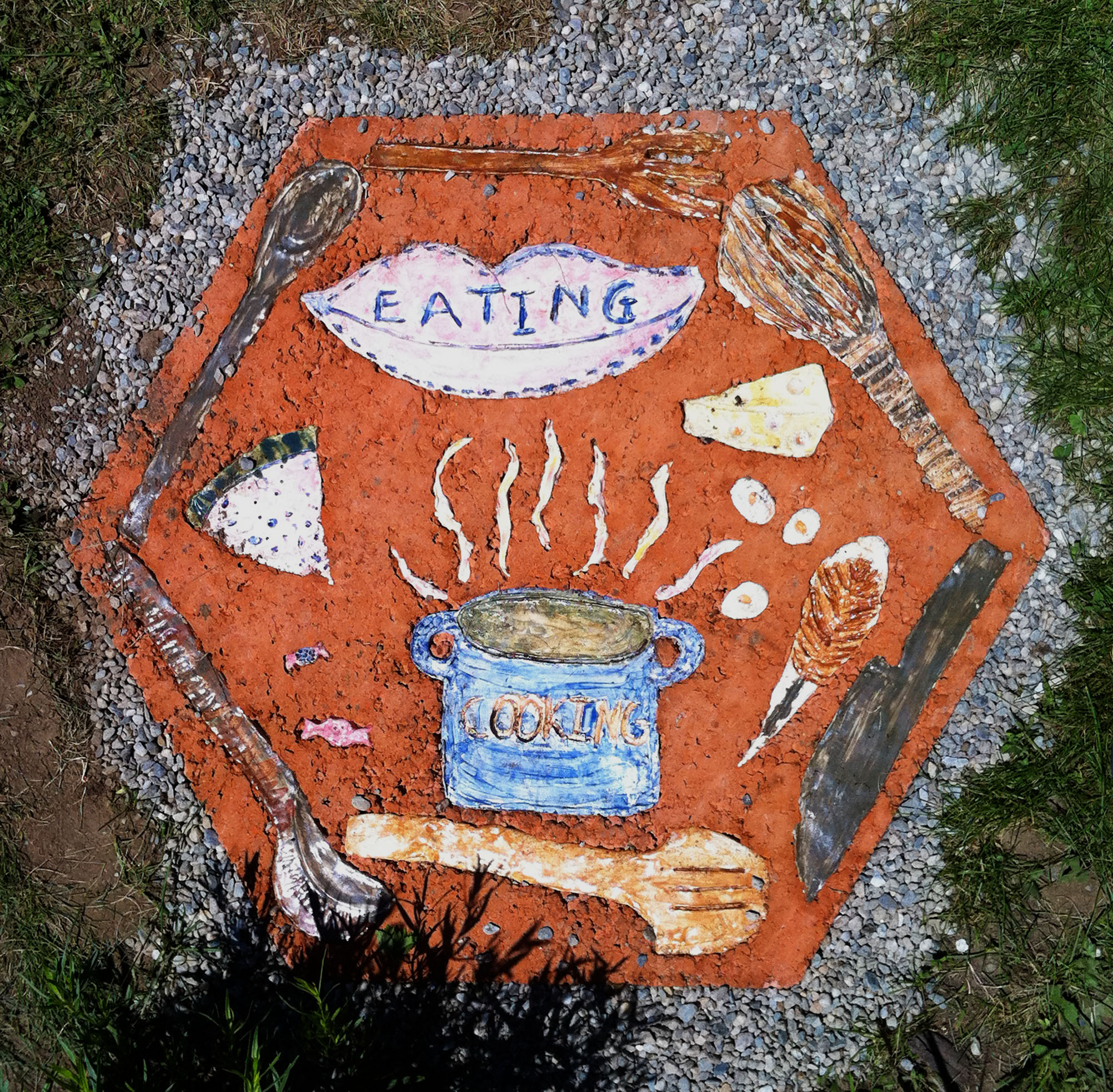
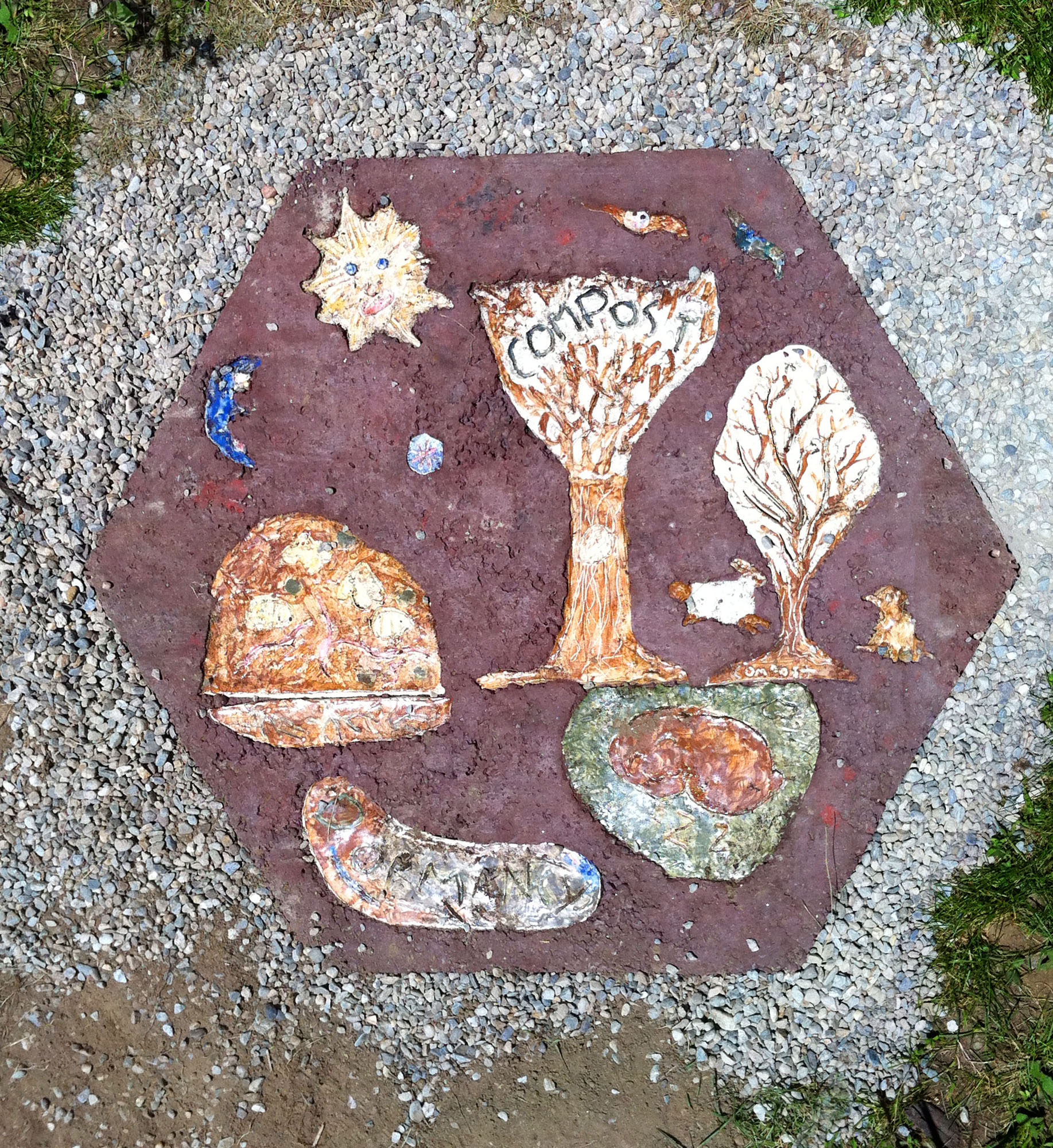




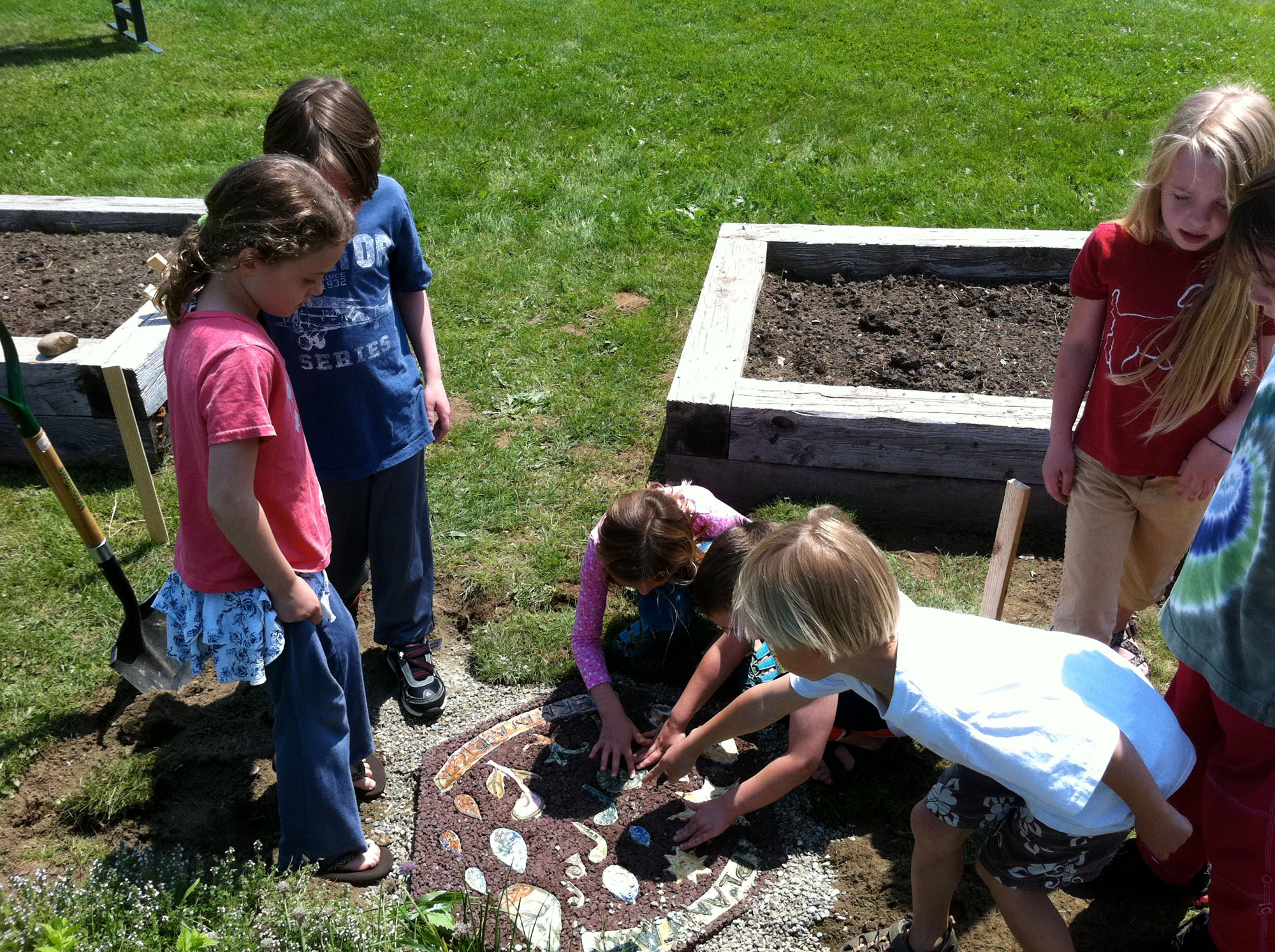
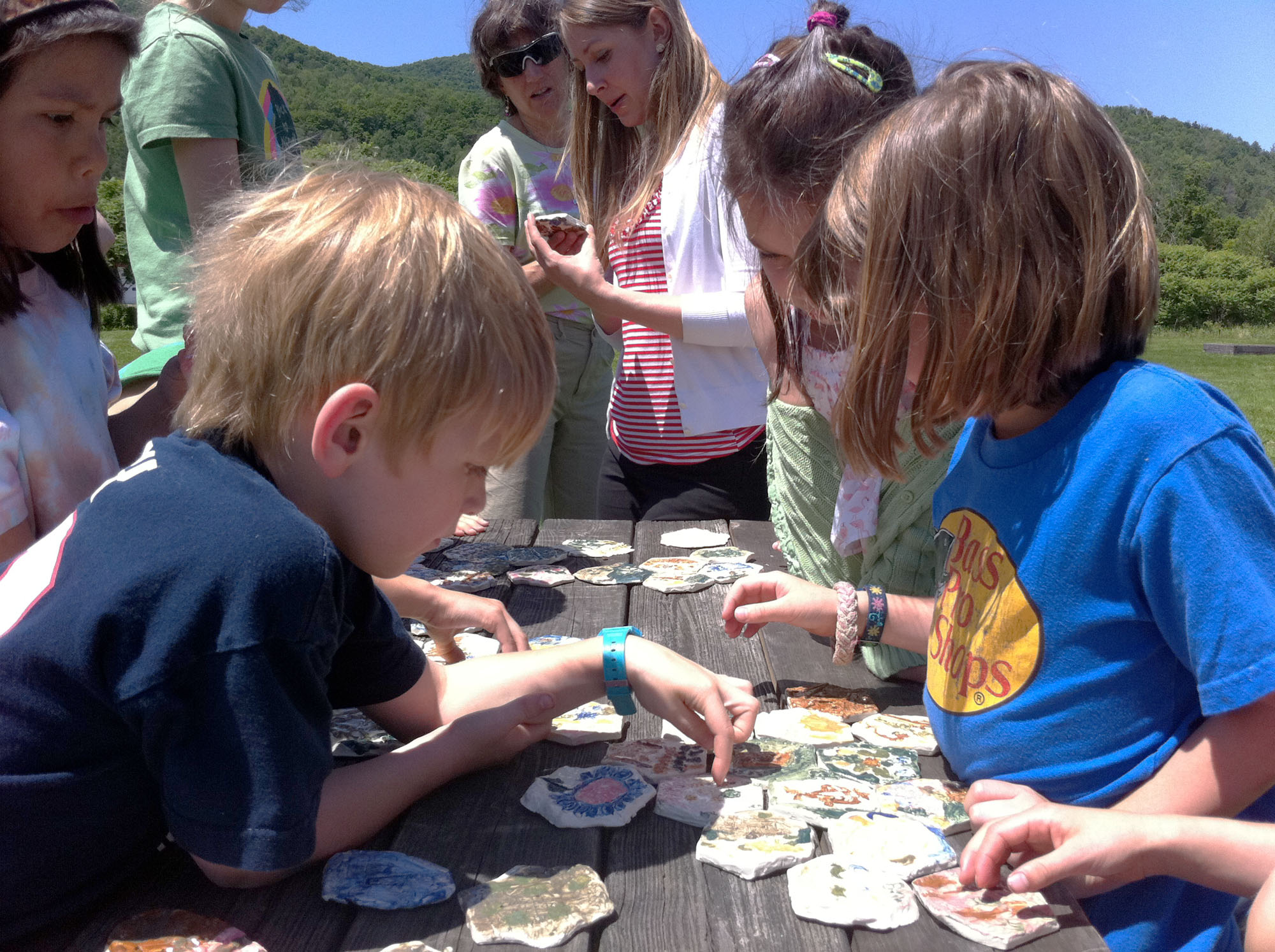
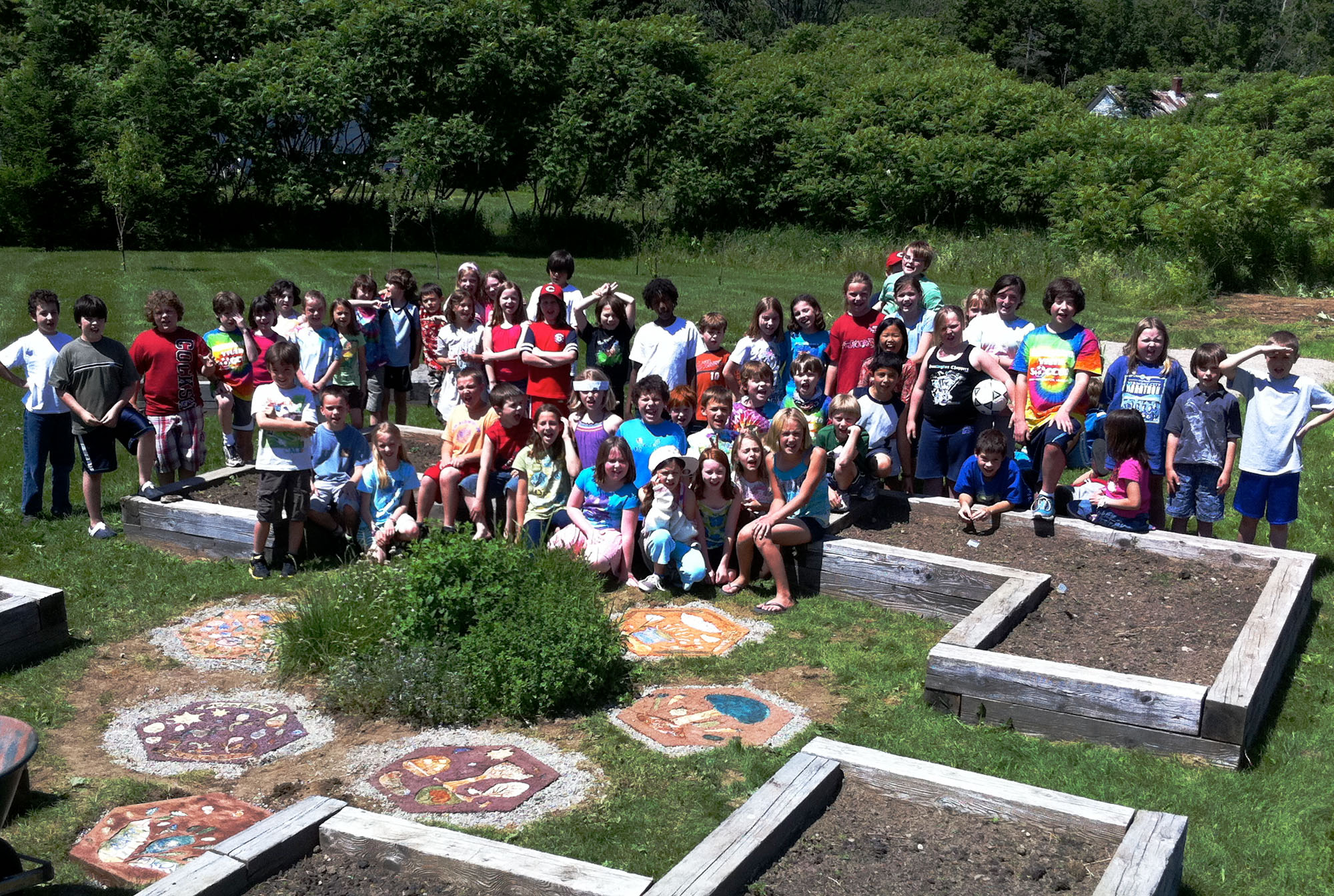
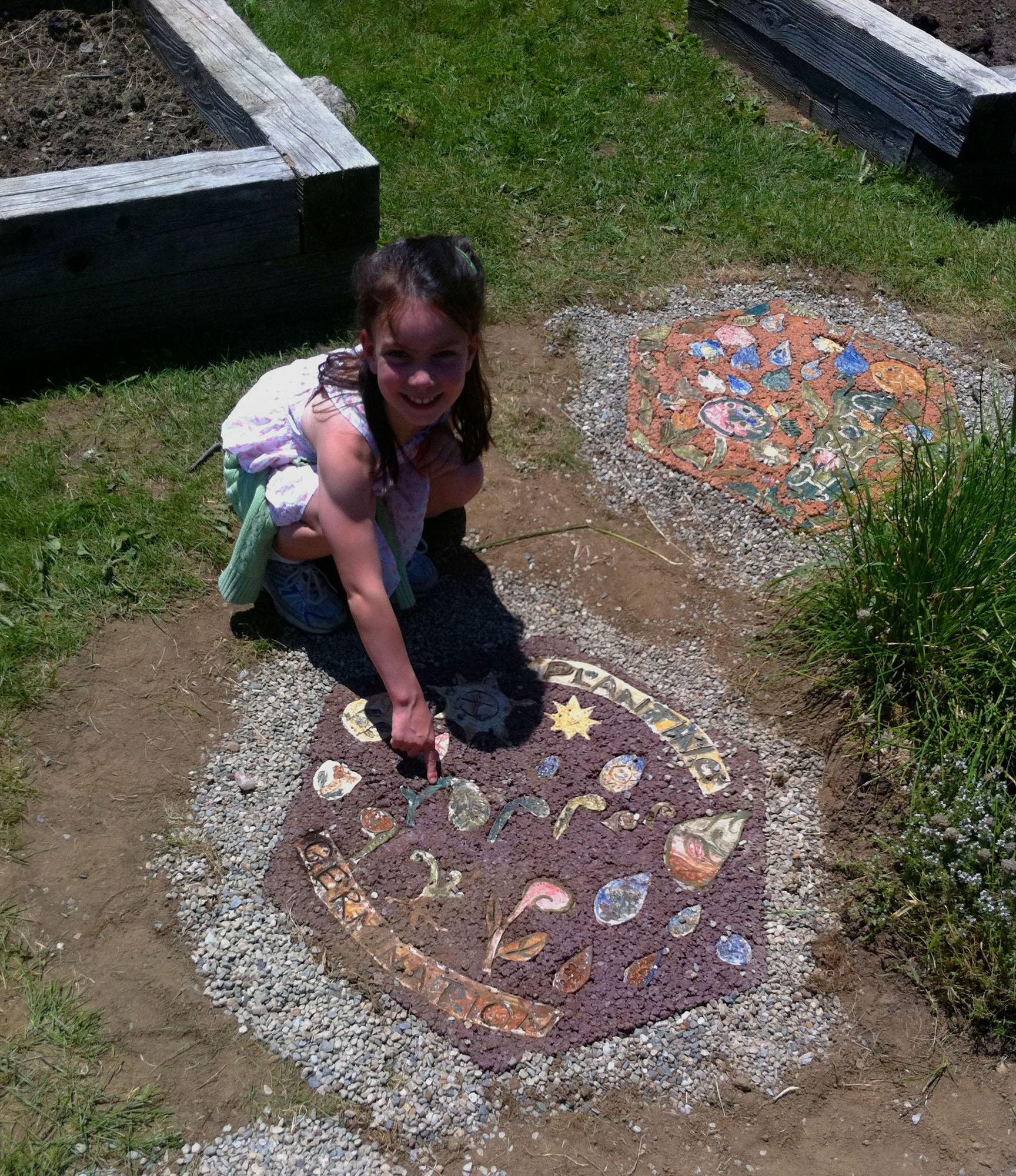
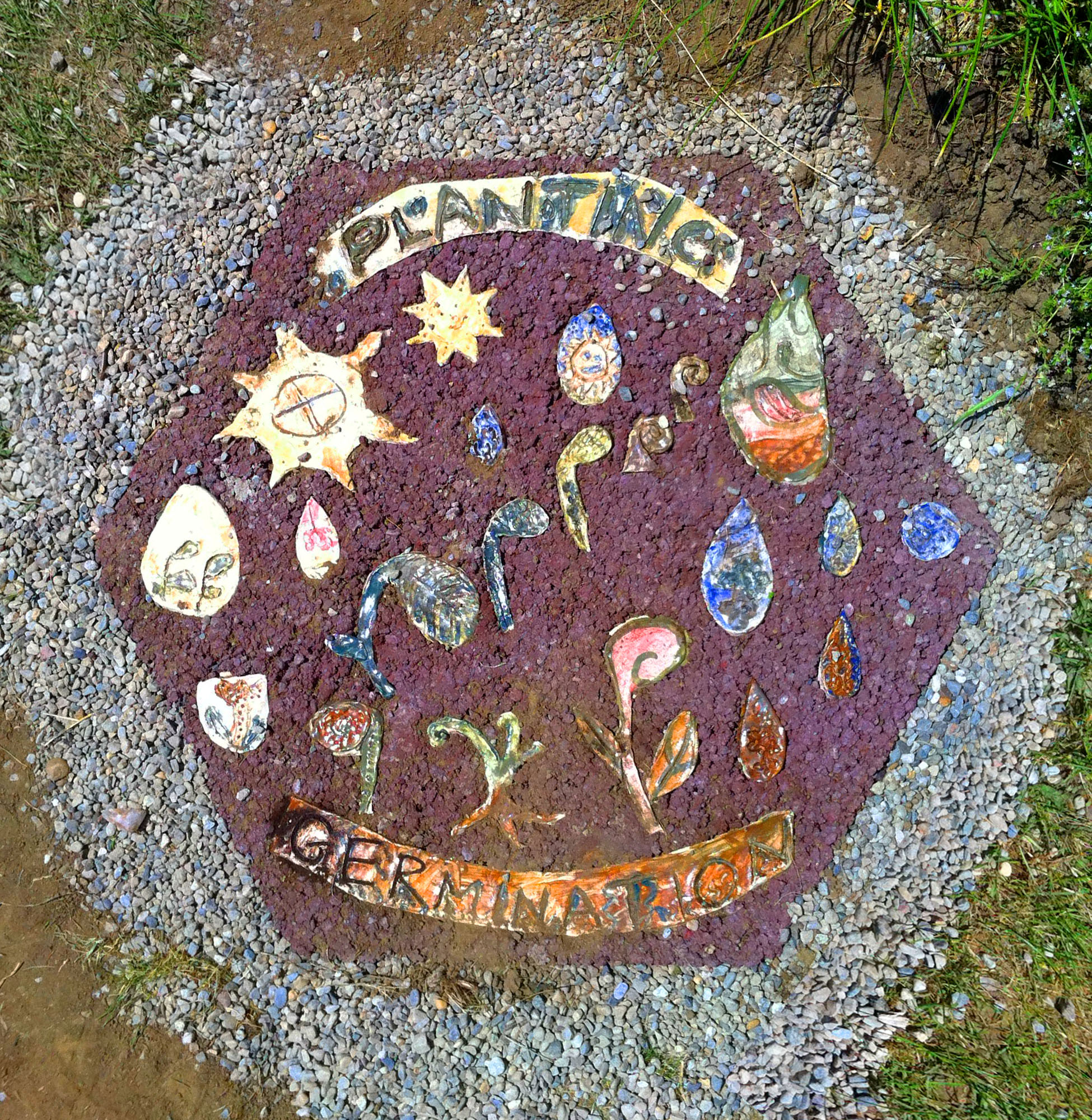
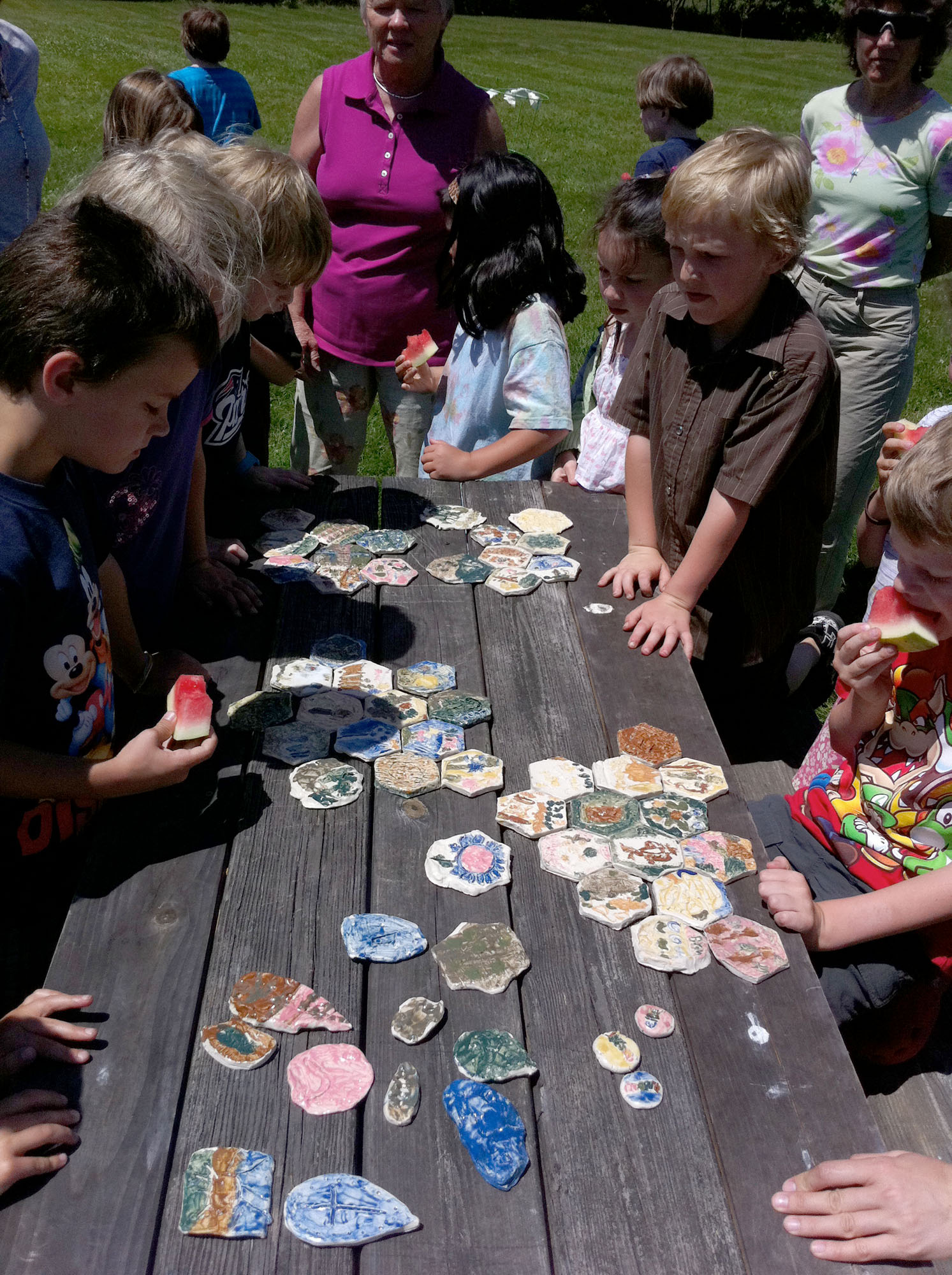
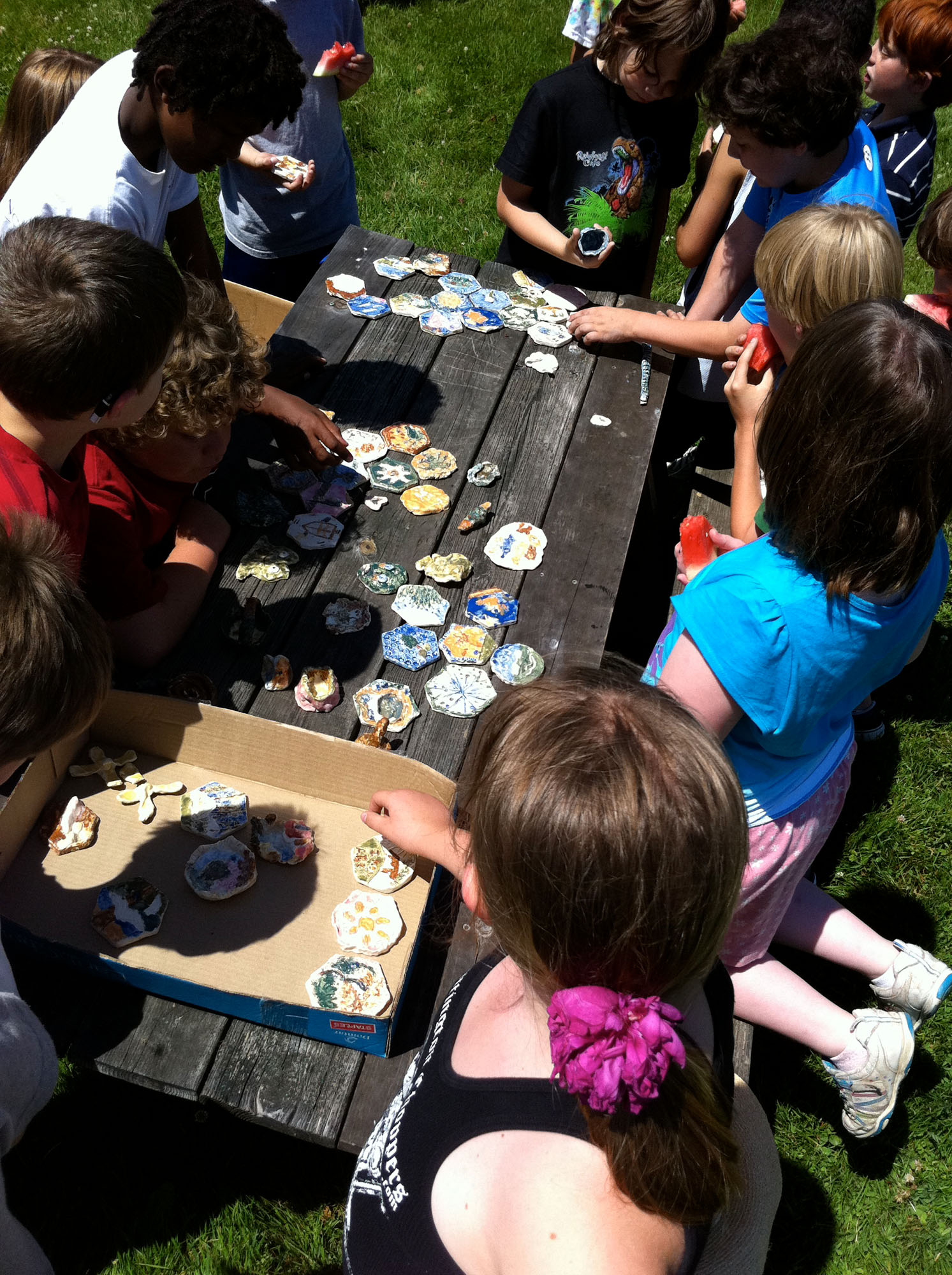
About the project:
I was brought in by a group of parents who ran the garden committee as an artist in residence. Their goal for my residency was to integrate learning about the garden into a creative experience for the students. When I considered current environmental concerns and inspiration I came to the bees. The collective nature of the work of bees, and the work of the school guided my approach to each class working on one hexagonal stepping stone that collectively created a ‘comb’ of stepping-stones to enhance the school garden. My goals for the project include:
• building awareness of and love for ecological cycles
• multicultural inspiration
• collectively creating a durable artwork that students take pride in to develop a sense of belonging to and ownership of their school
• collaboratively working with all ages (the school goes through fourth grade)
Materials & Description of Artwork
A honeycomb formation of hexagonal stepping-stones (each edge 15”) made from color tinted cast concrete with colorful student designed and handmade tiles embedded in each stone to depict part of the growth cycle. The seven stepping-stones form a flower or ring shape with a “stem” and were placed in the school’s garden within and around their herbs and raised beds. The school collectively created the project, where the Kindergarteners made the title stepping stone, “Learn To Grow” which was in the “stem” position. One first grade class worked on Planting & Germination, the other first grade did Growth & Bloom, second grade depicted Harvest, and the mixed third / fourth grade classes created Cooking & Eating, Digestions & Growth for People, and Compost & Dormancy (which was placed next to Planting & Germination, completing the cycle).
Process & Timeline
I introduced myself as an artist inspired by nature, and showed slides with vivid examples of art that depicts life energy and gardens from many cultures and times: Thai kranoks – the swirled wing/fire/plant-like patterns that make Thai art look alive, geometric patterning found in Islamic arts to symbolize the sacred, Barberini Bees from Renaissance Italy, examples from more recent and contemporary art such as the mosaic garden work of Niki de Saint Phalle and the Beehive Collective. I showed images of bees working as collectives and explained how artists work as collectives as well, inviting the classes to imagine that they were a hive of bees working collectively to create something larger than one could create on their own.
After a class discussion on the art and the growth cycle of the garden we took inspiration from the work in the slide show to fuel a design session. Students thought individually and collectively on how to depict their (pre-assigned) part of the growth cycle on one large hexagonal stepping-stone by:
• Group discussion helped students envision their assigned subject.
• Listing all of the ways that they could illustrate their concept.
• Voting on how effective each of the different images was at illustrating the group’s concept.
• Tallying up the votes and designing one picture with the most effective images, which became their stepping stone plan.
Students then worked with clay individually or in pairs on specific parts of the image. They also each received a smaller three inch hexagonal sampler tile that they were invited to experiment with and was theirs to keep at the end of the drying and firing process. The following day students had more time to work on the tiles, adding details, more texture and color (with slip).
The formal class contact part of the residency was quite brief with two official class sessions per grade / class. I fired and glazed the tiles offsite and returned to the school over the next few weeks to cast the hexagonal stepping-stones in molds I constructed off site. Small groups of students from each of the older grades worked with me on casting the stones and preparing the site in the garden - applying mold release, cutting steel mesh for strength within the concrete of each stone, laying out of the themed tiles in the molds, mixing and pouring the concrete, clean up, removing sod, and laying in weed cloth and gravel to support the stepping-stones. Learning about and participating in the hands on work of casting and siting the stepping-stones reinforced learning on the Properties of Matter, and Engineering Design.
When the project was completed there were two assemblies where half of the school came out to the garden at a time and sang over the stones to commemorate the completion of the work (the Garden Song, inch by inch, row by row). There was watermelon to eat (and compost!) and time to play. I laid out the small student sampler hexagonal tiles in a hive like pattern for the students to admire their individual and collective work before claiming their part.
